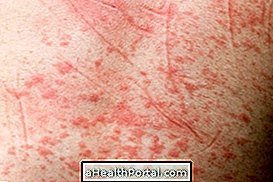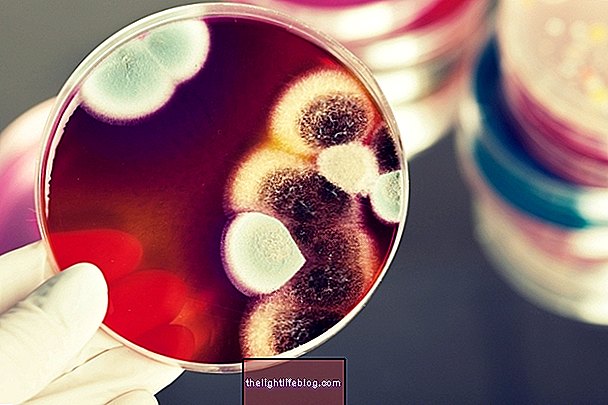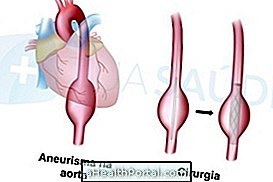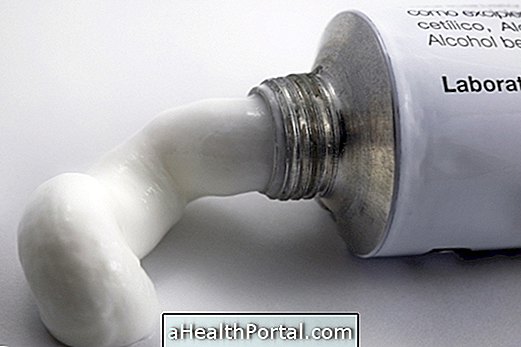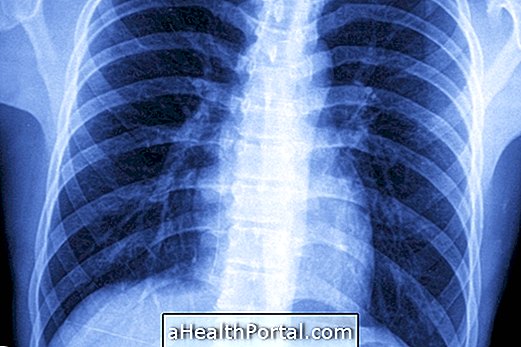There are several scientific researches around the cure of AIDS and over the years several advances have appeared, including the complete elimination of the virus in the blood of some people, being considered that they are apparently cured of HIV, and must be monitored periodically to confirm the cure.
Although there are already some cases of cure, research for the definitive elimination of the HIV virus still continues, because the treatment that was effective for one person may not be for another, even because the virus is capable of mutating easily, which makes the most difficult treatment.

Some advances in relation to curing HIV are:
1. Cocktail in just 1 remedy
For the treatment of HIV it is necessary to use 3 different types of medication daily. A breakthrough in this regard was the creation of a 3-in-1 remedy, which combines the 3 drugs in a single capsule. Learn more about the 3 in 1 AIDS remedy here.
This treatment, however, fails to eliminate HIV viruses from the body, but it does reduce the viral load a lot, leaving HIV undetectable. This does not represent the definitive cure for HIV, because when the virus perceives the action of the drug, it hides in areas where the medication cannot enter, such as the brain, ovaries and testicles. Thus, when a person stops taking HIV drugs, it quickly multiplies again.
2. Combination of five antiretrovirals, gold salt and nicotinamide
Treatment with a combination of 7 different substances has had more positive results because they work together to eliminate the HIV virus from the body. These substances manage to eliminate viruses that exist in the body, force viruses that have hidden in places such as the brain, ovaries and testicles to appear again, and force cells infected with the virus to commit suicide.
Human research is being carried out in this direction, but the studies have not yet been completed. Despite having eliminated many remaining viruses, it was not possible to completely eliminate HIV viruses. It is believed that after this is possible, further investigations will be needed because each person may need their own specific medication. One of the strategies being studied is with dendritic cells. Learn more about these cells here.
3. Vaccine treatment for HIV positive people
A therapeutic vaccine has been developed that helps the body to recognize HIV-infected cells that must be used in combination with a medicine called Vorinostat, which activates cells that are 'asleep' in the body.
In a survey carried out in the United Kingdom, one patient was able to completely eliminate the HIV virus, but the other 49 participants did not have the same result and therefore more research is needed on their performance until a treatment protocol can be developed that is capable of be applied worldwide. That is why more research will be carried out in this direction in the coming years.
4. Treatment with stem cells
Another treatment, with stem cells, has also been able to eliminate the HIV virus, but since it involved very complex procedures, it cannot be used on a large scale because this is a complicated and very risky treatment, since about 1 in 5 transplant recipients die during the procedure.
Timothy Ray Brown was the first patient to achieve a cure for AIDS after undergoing a bone marrow transplant for the treatment of a leukemia and after the procedure his viral load was decreasing more and more until the latest tests confirmed that he is currently HIV negative and it can be said that he is the first man to be cured of AIDS in the world.
Timothy received stem cells from a man who had a genetic mutation that only about 1% of the population in northern Europe has: The absence of the CCR5 receptor, which makes him naturally resistant to the HIV virus. This prevented the patient from producing HIV-infected cells and, with treatment, cells that were already infected were eliminated.

5. Use of PEP
Post-exposure prophylaxis, also called PEP, is a type of treatment that consists of using medications right after the risky behavior, where the person may have been infected. Since in this immediate period after the behavior there are still few viruses circulating in the blood, there is a possibility of 'cure'. That is, theoretically the person was infected with the HIV virus but received treatment early and this was sufficient to completely eliminate HIV.
It is important that the use of these drugs is done in the first two hours after exposure, as this is more effective. Even so, it is important to have tests for the detection of the HIV virus 30 and 90 days after unprotected sexual intercourse.
This medication reduces the chances of being infected sexually by 100% and by 70% through the use of shared syringes. However, its use does not exclude the need to use condoms in all intimate contact, nor does it exclude other forms of HIV prevention.
6. Gene therapy and nanotechnology
Another possible way to cure HIV is through gene therapy, which consists of modifying the structure of the viruses present in the body, in a way that prevents its multiplication. Nanotechnology can also be useful and corresponds to a technique in which it is possible to put all the mechanisms to fight the virus in just 1 capsule, which must be taken by the patient for a few months, being a more efficient treatment and with less harmful effects.
Because AIDS still has no cure
AIDS is a serious disease that has not yet been definitively cured, but there are treatments that can greatly reduce the viral load and prolong the life of the HIV positive person, improving the person's quality of life.
Currently the treatment of HIV infection on a large scale is done with the use of a cocktail of drugs, which, despite not being able to completely eliminate the HIV virus from the blood, is able to increase the life expectancy of the person. Find out more about this cocktail at: AIDS Treatment.
The definitive cure for AIDS has not yet been discovered, however it is near, and it is important that patients who were considered cured of the disease are monitored periodically to check how the immune system is reacting and if there is any sign that is indicative of the presence of the HIV virus. .
It is believed that the elimination of the HIV virus may be related to the correct activation of the immune system and can arise when the person's body is able to identify the virus and all its mutations, being able to eliminate them completely, or through new technologies that they are not aimed precisely at stimulating the immune system, as is the case with gene therapy and nanotechnology, which work in different ways.
Was this information helpful?
Yes No
Your opinion is important! Write here how we can improve our text:
Any questions? Click here to be answered.
Email in which you want to receive a reply:
Check the confirmation email we sent you.
Your name:
Reason for visit:
--- Choose your reason --- DiseaseLive betterHelp another personGain knowledge
Are you a health professional?
NoMedicalPharmaceuticalsNurseNutritionistBiomedicalPhysiotherapistBeauticianOther
Bibliography
- THE NEW ENGLAND JOURNAL OF MEDICINE. Long-Term Control of HIV by CCR5 Delta32 / Delta32 Stem-Cell Transplantation. 2009. Available at:. Accessed on 15 Apr 2019
- SHADYAB, Alladin H .; HALE, Braden R .; SHAFFER, Richard A. HIV / AIDS Securitization: Outcomes and Current Challenges. Current HIV Research. Vol 15. 2nd ed; 78-81, 2017
- PENNET, Oliver; YADAV, Swati S .; SUNG AN, Dong. Stem Cell - Based Therapies for HIV / AIDS. Adv Drug Deliv Rev. 187-201, 2016
- MINISTRY OF HEALTH. PEP (Post-Exposure Prophylaxis to HIV). Available in: . Accessed on 17 Apr 2019



